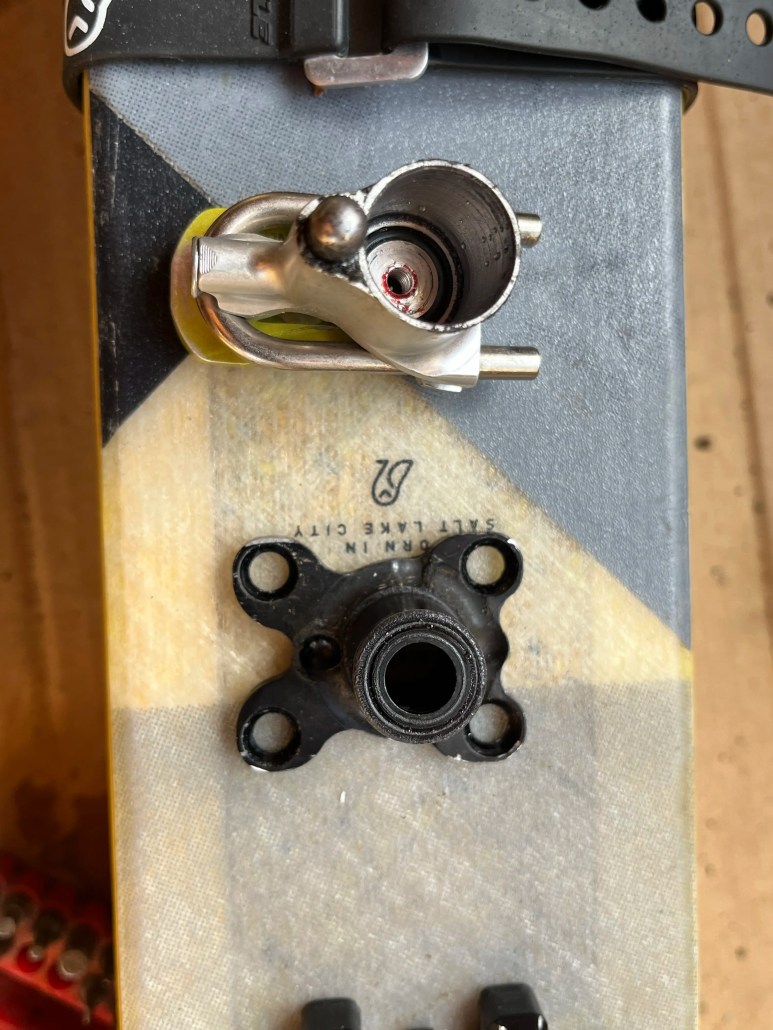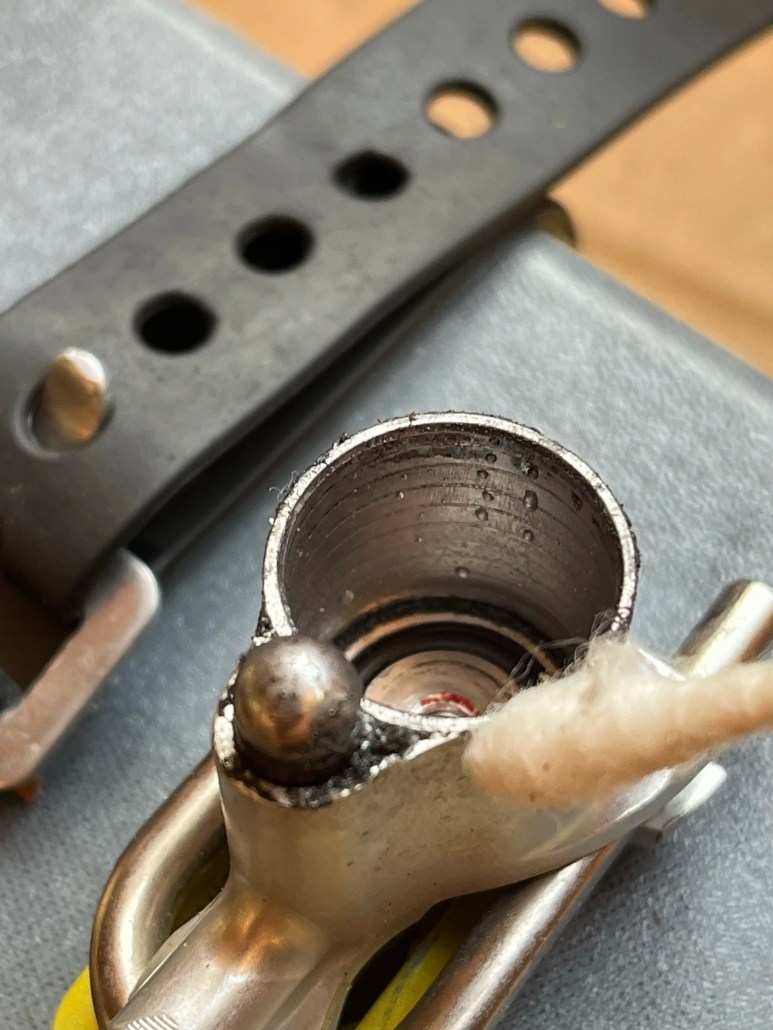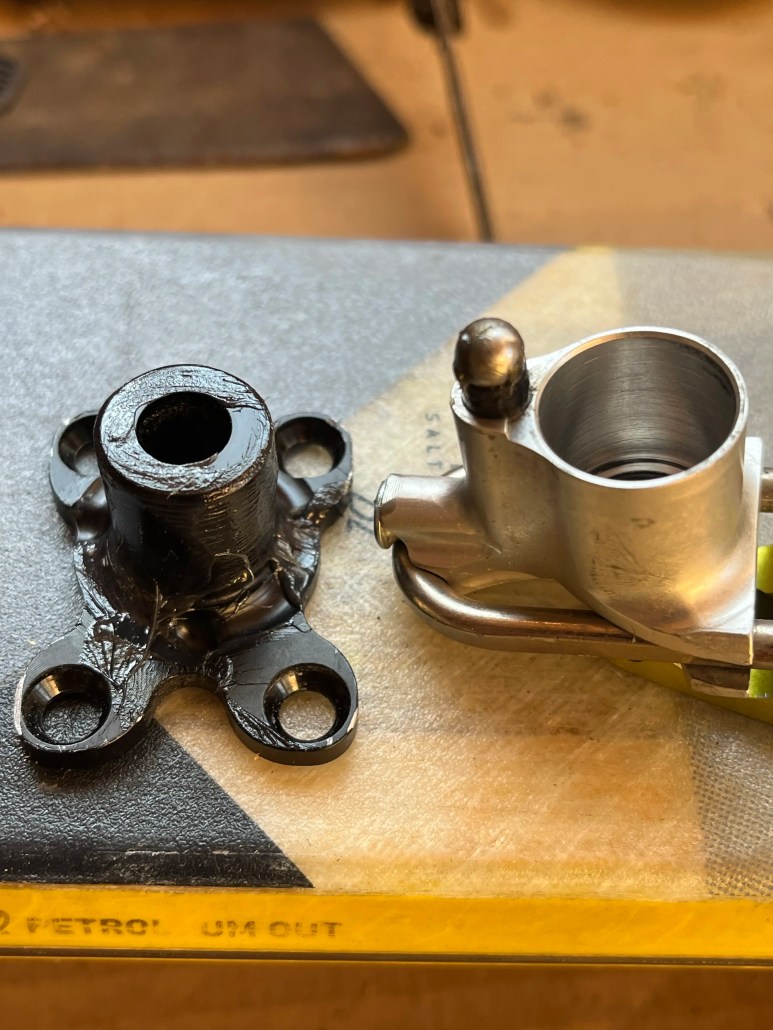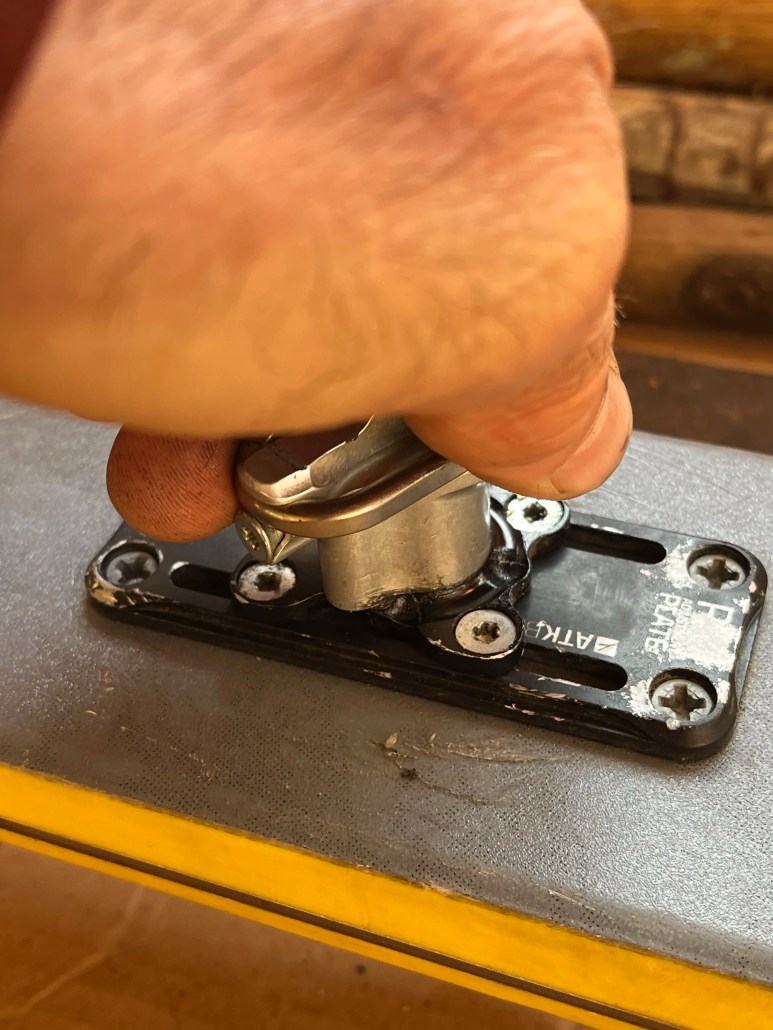I have the Crest 10, which has a pretty similar heel to the R10 (10mm travel), no freeride spacer, but it does have the brakes, so your boot heel does rest on something.
I had it on a Wayback 106 first, now on Backland 100.
I also had it for a season on the Agent 1.0 (86mm waist).
I now have have the HR 10, which has the same camming pin action, but no travel, and no brakes, so heel rests on pins only.
Those are on Backland 85 UL.
So the most direct comparison would be from the Agents with the Crest to the 85 UL with Haute Route, as those are similar sized skis (length and width)
The problem there is, I switched early season, so didn’t really compare them back to back.
And the Crests on my other skis are hard to compare because those skis are much longer and wider.
I also don’t ski hard or fast, and have been in softer, lighter boots the last two seasons.
Still, with those caveats, I don’t notice a big difference between the Crest and the Haute Route.
For my mind, the elastic travel is more about safety, ie releasing properly, even under big compressions.
After all, for skiing feel, you are still clamped rigidly to the front pins, no give there.
With that in mind, the bigger your BSL, and the longer the skis, the more I value the elastic length travel, since they are more likely to be ‘bridging’ a hole.
If you want the the elastic travel you could get the Kuluar, but it gives up the camming heel, and it has the tall ramp angle, that bothers many.
Results 2,001 to 2,025 of 2648
Thread: Official ATK Binding Thread
-
10-24-2023, 01:07 PM #2001
 Registered User
Registered User
- Join Date
- Feb 2016
- Posts
- 333
-
10-24-2023, 01:13 PM #2002
 Registered User
Registered User
- Join Date
- Feb 2016
- Posts
- 333
-
10-24-2023, 01:29 PM #2003
-
10-24-2023, 08:14 PM #2004
RE: elastic travel... I have Haute Route 10s on every pair of touring skis I own and every resort ski I own has Pivot 15s. I definitely notice the lack of elastic travel on the Haute Route 10 vs. a Pivot 15 but the difference between most tech bindings is too small to notice for most folks in my opinion. The Pivot 15 has 45mm lateral and 28mm vertical elastic travel vs. the 10-15mm max some people are losing their mind about on tech bindings. Tech bindings and elastic travel don't really go together and the toe is always rigid on them anyway.
Can't comment about whether the freeride spacer is a meme or not because I'm too much of a weight weenie on touring bindings to get anything with one. Considered adding a DIY one like Cy did ^^ but I loan my skis out to friends/switch boots occasionally and I'd need one that adjusts a bit.
-
10-24-2023, 09:57 PM #2005
 Registered User
Registered User
- Join Date
- Sep 2022
- Posts
- 113
My ATK Trofeo heel pieces stopped rotating after a volcano ski trip in Chile. The volcanic pumice and the dirt from spring skiing had worked its way into the rotation mechanism and pretty much halted any movement. People have talked about this here, but I haven't found a step by step service description.
These little binders are pretty awesome. I put over a 100 days on this pair over the past year. Cleaning and lubing the rotation mechanism regularly, every 20 days or so in the mid-winter, (more often when there's more dirt around) is a good idea. I believe ATK suggests using a white lithium grease. I'd didn't have any on hand this time so I just used an all purpose automotive grease...we'll see how it goes. The complete service only takes about 20 minutes once you get the hang of it.
 ATK Trofeo Heel PieceOccasionally, the ATK Trofeo bindings require maintenance. If you notice the heel pieces are becoming harder to rotate, it’s time to service them. The service procedure is quite simple. The more frequent and less complicated service cycle is to clean and grease the heal rotation groove. You’ll notice in this photo, it is covered and volcanic pumice and is in dire need of service.
ATK Trofeo Heel PieceOccasionally, the ATK Trofeo bindings require maintenance. If you notice the heel pieces are becoming harder to rotate, it’s time to service them. The service procedure is quite simple. The more frequent and less complicated service cycle is to clean and grease the heal rotation groove. You’ll notice in this photo, it is covered and volcanic pumice and is in dire need of service.
 Loosening the binding mounting screwsIf you feel you need to do the more involved service, start by marking where your heel piece sit on the adjustment plate. You can do this with a marker or a box knife. Then remove the mounting screws.
Loosening the binding mounting screwsIf you feel you need to do the more involved service, start by marking where your heel piece sit on the adjustment plate. You can do this with a marker or a box knife. Then remove the mounting screws.
 Dirty heel piece removed. Note the pumice in the rotation grove.Once you remove the heel piece start by cleaning the exterior and the vertical chase on the heel tower.
Dirty heel piece removed. Note the pumice in the rotation grove.Once you remove the heel piece start by cleaning the exterior and the vertical chase on the heel tower.
 Note the torx screw that fastens the heel piece to the tower.Loosen the torx screw in the tower, while carefully holding the two pieces together. There is a tiny spring-loaded ball bearing and cup in there.
Note the torx screw that fastens the heel piece to the tower.Loosen the torx screw in the tower, while carefully holding the two pieces together. There is a tiny spring-loaded ball bearing and cup in there.
 Heel tower and heel piece, note ball bearing and cup in heel piece.Once you get them apart, clean the heel tower and carefully disassemble the spring-loaded ball bearing.
Heel tower and heel piece, note ball bearing and cup in heel piece.Once you get them apart, clean the heel tower and carefully disassemble the spring-loaded ball bearing.
 A q-tip works well to clean the groove.
A q-tip works well to clean the groove. Pumice, the culprit of my binding’s lack of rotation.Once the spring assembly is removed, wipe it down and clean the heel piece.
Pumice, the culprit of my binding’s lack of rotation.Once the spring assembly is removed, wipe it down and clean the heel piece.
 Heel piece and spring.
Heel piece and spring. Binding cleaned, greased and ready to reassemble.ATK provides a grease for their bindings, it’s probably best to use that grease. However I didn’t have any on hand so I used a light automotive grease instead. The screw that holds the heel piece to the heel tower requires a dab of red loc-tite.
Binding cleaned, greased and ready to reassemble.ATK provides a grease for their bindings, it’s probably best to use that grease. However I didn’t have any on hand so I used a light automotive grease instead. The screw that holds the heel piece to the heel tower requires a dab of red loc-tite.
 Once the binding is reassembled, check it to see how it rotates and wipe off any excess grease.
Once the binding is reassembled, check it to see how it rotates and wipe off any excess grease.
-
10-24-2023, 11:04 PM #2006
Awesome run down thanks
And do tell about the volcanos
-
10-25-2023, 03:34 AM #2007
Great pictorial/narrative. Thanks!
... ThomGalibier Designcrafting technology in service of music
-
10-25-2023, 06:49 AM #2008
 Registered User
Registered User
- Join Date
- Jan 2022
- Posts
- 94
Super solid post AG!
-
10-25-2023, 08:51 AM #2009
Great tutorial AG! I am curious, the ATK Trofeo is the only heelpiece I have ever known of to get gunked up and stuck. Does that happen with other bindings? I have hundreds of days on other touring bindings and have never had to service or had any issues, but I am usually not skiing in volcanic areas.
-
10-25-2023, 11:09 AM #2010
 Registered User
Registered User
- Join Date
- Sep 2022
- Posts
- 113
Good point…I agree. It must have something to do with how exposed to the elements the rotation mechanism is. My only experience is with the Dynafit TLT/Turns and never had any issues with them, even pairs with 400+days. I guess that’s the price you pay for minimalism.
I’d be keen to hear if others who are using similar weight category bindings have this issue…I am not partial to one brand or another, so if there’s a better alternative I am all ears.
-
10-25-2023, 11:40 AM #2011
 Anxious desk jockey
Anxious desk jockey
- Join Date
- Nov 2010
- Location
- Fairhaven
- Posts
- 290
You're mixing two different definitions of "elastic travel". Alpine bindings will allow boots to move in a few directions and return to center without releasing. If you exceed that amount then the binding releases. The "elastic travel" mentioned here is specifically in the heel piece and allows the distance between the toe and heel to move by the amount of travel the heel has. This means you don't have to be as careful with setting a 4mm gap between the boot and the binding and the binding will compensate for the changing distance between the heel and toe pieces as the ski is flexed in a tight arc. If you exceed the elastic travel then there is the possibility that the heel piece will push the toe out of the toe piece and the boot will release just from a tight g-out.
-
10-25-2023, 11:46 AM #2012
I have 100+ days in all conditions, including spring mud on multiple pairs of Ski Trab race bindings and haven't had to do any maintenance. I need a new pair of bindings and was thinking about ATK to save a few bucks but the rebuild requirement seems like a pain since it is avoidable. I will be in skimo co later this week, I will ask the techs what they have seen. I do know multiple people who have had Trofeo heels gunk up and haven't heard of that happening in any other bindings, even other ATK models.
-
10-26-2023, 09:11 AM #2013
 Registered User
Registered User
- Join Date
- Feb 2016
- Posts
- 333
This was perhaps mentioned up stream in this thread, but not finding anything so far.
Does removing the brakes from Crest or RT same any noticeable weight, and what does it look like after the removal?
I am thinking of a pair of powder touring skis, and like the elastic travel and cam system on those heels, but I doubt the skinny ATK brakes actually work in power anyways, so I’d be happy ditching those to save some weight.
-
10-26-2023, 09:33 AM #2014
Hopefully someone else knows the weight savings, but they are easy to remove and people definitely do run them without brakes. It leaves a big gap that can get gummed up with snow and ice though, so you may want to pick up some of the plastic covers they sell to close that up.
Would be interested to see if there's a way to run the new crest version freeride spacer without brakes, that could be really nice on fat skis.
Sent from my Pixel 3 XL using Tapatalk
-
10-26-2023, 09:48 AM #2015
It’s in the neighborhood of 25-30 grams depending on the brake width. The other spacers all run fine without brakes on them so i bet these would as well
Sent from my iPhone using TGR Forums
-
10-26-2023, 09:54 AM #2016
Blister has the Raider brakes at 46g each
https://blisterreview.com/gear-revie...12-majesty-r12
-
10-26-2023, 10:25 AM #2017
-
10-26-2023, 10:40 AM #2018
Per the instruction pics on Hagan's website, it seems Evo brakes can be replaced, so I assume that means they can be removed? Although that is not the same as running them as brakeless.
https://www.haganskimountaineering.c...tomatic-brakes
-
10-26-2023, 01:50 PM #2019
 Registered User
Registered User
- Join Date
- Nov 2018
- Posts
- 850
Mounting question for you all (apologies if it’s addressed earlier - search sucks and 2000 posts is too much to skim):
I’m doing my first ATK mount (some DPS R10s I picked up here), and I have the paper template and instructions from ATK. They seem relatively straightforward, though perhaps a little more fiddly than a normal alpine paper mount (of which I’ve done dozens).
Do you all normally use the ATK-provided template and instructions or is there a better method that I should be following or template that I can use?
Also, any other useful tips or tricks for mounting these that I should be aware of? I’m going to do a 2x4 mount first just to be safe, but any tips are welcome
Sent from my iPhone using Tapatalk
-
10-26-2023, 02:03 PM #2020
Yes:
When making the ATK SlideWright Binding Layout Tool, I combined multiple ATK templates to generate the layout for the above ATK flavors (bottom of image). If you'd like the basis template for the layout tool, let me know and I'll clean it up.Best regards, Terry
(Direct Contact is best vs PMs)
SlideWright.com
Ski, Snowboard & Tools, Wax and Wares
Repair, Waxing, Tuning, Mounting Tips & more
Add TGR handle to notes & paste 5% TGR Discount code during checkout: 1121TGR
-
10-26-2023, 03:40 PM #2021
 Gel-powered Tech bindings
Gel-powered Tech bindings
- Join Date
- Dec 2004
- Location
- Amherst MA & Twin Mtn NH
- Posts
- 4,720
Thanks for the heads-up!
Prompted me to check out my three pairs of ATK bindings (one Trofeo, two the race version, but all three share the same mechanicals).
Two were just fine, but the pair that is the oldest and has been through the worst abuse was indeed harder to turn.
Maintenance session coming up!
I have experienced a similar problem with this model:
https://skimo.co/dynafit-low-tech-race-bindings
Still one of my all-time favorite models!
Can often be fixed just by squirting lubricant at the interface between the fixed base vs rotating top.
I also had a similar problem with traditional Dynafit bindings.
(Might have the Comfort, but same underlying mechanics as TLT Turn etc.)
I backed out the lateral adjustment all the way, removed the cap, the inner spring, lifted the heel unit housing off of the pedestal and ... yuck!
Thoroughly cleaned the housing innards and the pedestal exterior, then applied lithium grease, and just fine again.Mo' skimo here: NE Rando Race Series
-
10-26-2023, 09:14 PM #2022
 Registered User
Registered User
- Join Date
- Feb 2016
- Posts
- 333
I switched the actual brake arms on one or two Crests last year, when moving them to different skis, but didn’t weigh the whole assembly, and don’t remember what it looked like with them off.
If I did this, I certainly wouldn’t get the EVO/AP brake versions. Why pay more and have more weight if you are removing it anyway?
It’s funny that among all the different combos of toe piece, heel tower, brakes, and mounting plates ATK and it’s resellers offer, this is not one they have…
-
10-27-2023, 07:08 AM #2023
 Registered User
Registered User
- Join Date
- Jan 2019
- Posts
- 93
Thanks a lot for the answers. I think I would be fine with the Haute Routes then - I recently met a guy that skies them on a Corvus Freebird without any problems. I did some basic math again, correct me if I'm wrong:
-R12s are 335g each with brakes (source atk website)
-HR10s are 209g each without brakes (source skimo.co)
--> which equals totals of 670g (R12 w brake), 570g (R12 w/o brake), 420g (HR10 with adj. plate and crampon receiver, no brakes)
Comparing apples to apples (more or less) aka both bindings w/o brakes would mean a total weight saving of 150g going HR instead of R12...hmmm...
-
10-27-2023, 07:28 AM #2024
Just asked them on IG about the difference between the AP and EVO brake system, FYI
On the AP models you need to hold down the rear pedal as you turn the head of the binding, as shown here. With the EVO Brake System there's no need for that. By rotating the head of the binding by 180 degrees, the ski brake activates. At that point, you simply step-in to lock the brake
Personally I'm fine with the old system.
Video here : https://www.instagram.com/reel/Cy3WHLQooEB/?utm_source=ig_web_copy_link
-
10-27-2023, 03:17 PM #2025
 Registered User
Registered User
- Join Date
- Jan 2018
- Posts
- 91
This may have already been answered, but does anyone know if the AP brakes can mount to the non-AP older models?



 Reply With Quote
Reply With Quote




Bookmarks